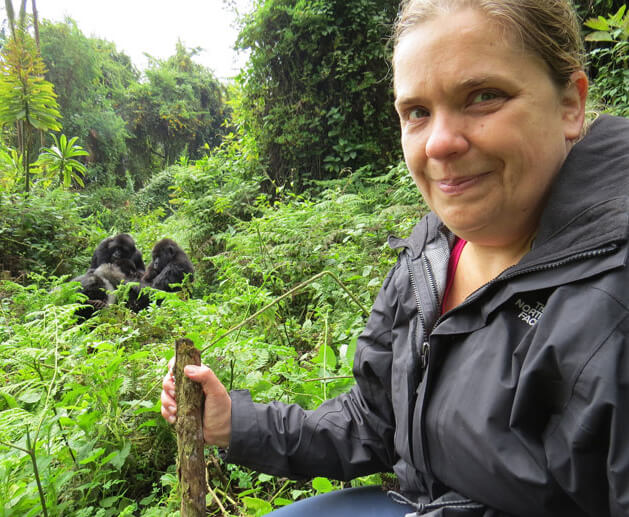Best Time for Gorilla Trekking in Africa, Best Time to Visit Rwanda
The best time to go gorilla trekking in Rwanda is from June to September and then December up to February. However, Mountain Gorilla Trekking in Rwanda can be pleasantly done in any period of the year. Gorilla tours in Rwanda are done at the Volcanoes National Park in Ruhengeri area. This applies to gorilla trekking in Uganda in Bwindi Impenetrable Forest National Park. In any of these countries, gorillas live in forests with relative rainier seasons. But all months are equally ideal for gorilla tracking safaris since East Africa at large has pretty balanced weather conditions.
In Rwanda, the year’s first rains begin coming in late February all through March, April and relatively and therefore there are moderate numbers of tourists because of the wet conditions and muggy forests. However, some visitors love the muddy and wet environment during the tracking of gorillas as this defines the best African safari experience. During these wetly months, there’s sufficient gorilla food down slopes due to rains and at the same time, it is much frostier on the higher slopes. So the gorillas keep around the warmer lower slopes where food is plentifully available.
In case you trek mountain gorillas during the mentioned months, you are most probable that your trekking would not be a lengthy one. In this case, many trekkers find the gorillas after hiking like 2 or 3 hours and are back at their lodges by lunch time. This same scenario applies to Uganda, even though the torrential rains there start in March, April up to May.
Despite the coldness, its undeniably true that such rains don’t make it hard or impossible to undertake gorilla tracking exercises. Gorilla tourists still are able to hike in the steep topographies. At the same time, the said rains only lasts for between 1-2 hours or even less in like every 3-5 days and the sunshine comes out. Even in the so called drier months, there is visible rain in good quantities. The high or low presence of gorilla visitors in either Uganda or Rwanda can also still be attributed to summer and winter seasons in the countries outside Africa, where their occurrences vary. The nature of their jobs and education holidays as well attribute to gorilla holidays in Africa.
During summer for instance in Europe, figures of gorilla trekking visitors upsurge and the same number drop during winter periods. With all the factors for high or low gorilla trekking activities in place, there are a number of gorilla trekking vacationers who regularly take benefit of the low seasonal discounts on lodges facilities. Uganda no longer offer discounted gorilla trekking permits which used to be sold in March, April, May and November. All permits in Uganda or Rwanda cost according to their set prices throughout the year.
At the same time, during the months when tourists are relatively low in numbers, several lodging and accommodation facilities in the mountain gorilla populated regions will also discount on their rates as incentive for travelers. Whatever the case, all the above explanations aside, records and experience demonstrate that trekking of mountain gorillas is doable any period of the year. Most past visitors attest that the experience and results are almost similar.
